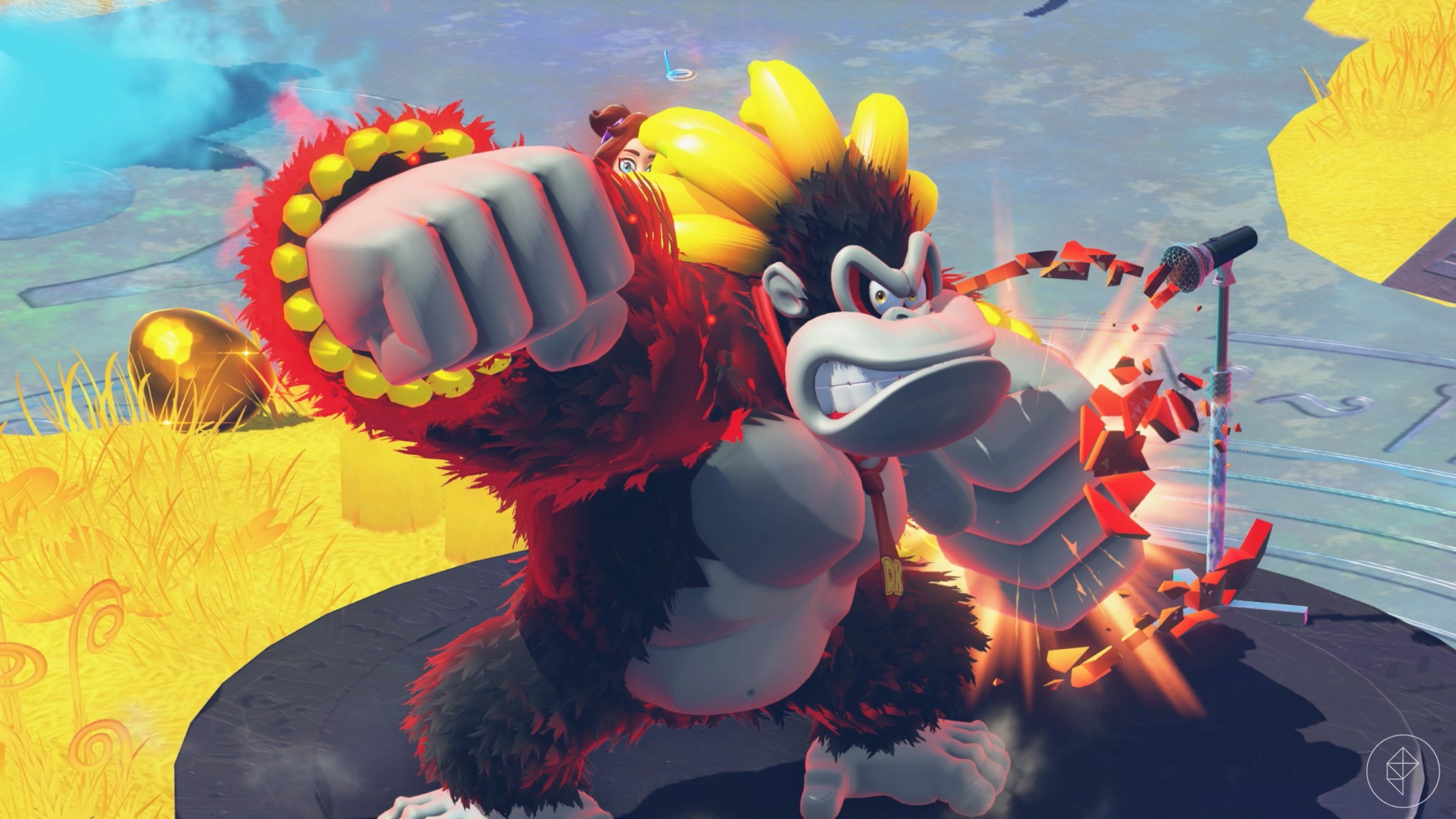
Even if you didn’t know that Donkey Kong Bananza was made by the studio behind Super Mario Odyssey, it wouldn’t take very long to figure it out. Nintendo’s latest 3D platformer shares clear DNA with the Switch classic, even if it trades elegant jumps for chaotic smashing. It’s the exact same brand of collect-a-thon, with hundreds of shiny Banandium Gems to collect across well over a dozen diverse biomes. Though as similar as the two games are, some of Bananza’s shortcomings are giving me a newfound appreciation of Odyssey eight years later.
Through my first 20 or so hours with Donkey Kong’s Switch 2 adventure, I went bananas. The immediate joy of smashing an entire map to bits vibrated something in my brain (no doubt the same part that finds catharsis in singing Limp Bizkit at karaoke). As I guided Donkey Kong and Pauline toward the center of the planet, I gleefully tore through every new environment in search of shiny gems to add to my collection. It was a familiar thrill, the same that propelled me to 100% complete Super Mario Odyssey back in 2017.
But the shine started to dull just a bit the closer I got to the core. While the scenery kept shifting, my actions remained static (save for a quick rhino racing detour). By the time I got to the stormy Tempest Layer, I knew exactly what I’d have to do. Track down Cranky Kong, complete a few battle arenas, take a quiz, and, of course, smash a lot of walls. Even with a few new gameplay twists, like extra Bananza Powers or materials with unique properties, the gem hunt eventually revealed a static gameplay core that could quite hold my attention through every single layer.

As collect-a-thon fatigue started to set in, I thought back to my time with Super Mario Odyssey. On its surface, it’s extremely similar to Bananza in structure. It even has its fair share of repeated Power Moon challenges. Yet I can’t recall ever growing bored of its flow on my way to grabbing 999 Moons. So what makes Odyssey different? It’s a matter of variety.
Odyssey’s secret weapon lies in Cappy. The ingenious gameplay hook allows Mario to possess different objects and take on their powers, bringing a bit of Kirby influence to the standard run-and-jump flow. That idea had two big benefits. For one, it added a constant stream of micro-surprises to the adventure. The moment where you toss your hat at a T. rex and suddenly become the towering beast remains an unmatched video game moment, and it happens dozens of times throughout Odyssey.
More crucial is what Cappy does to infuse a collection marathon with varied puzzle design. Each time you possess an object or creature in Odyssey, you gain access to a new set of rules. Taking over a Moe-Eye reveals invisible pathways in the Sand Kingdom, while a Lakitu allows you to fish. Some even open the door for totally unique minigames, like an RC car race and a picture-matching puzzle pulled straight out of Mario Party. Each form ensures that levels aren’t just new playgrounds with different paint jobs; there are new puzzle constructions each time.

Bananza’s approach to puzzle design and variety is flatter overall. Aside from the Racing Layer and some minecart sequences in Canyon Layer, I’m largely doing the same few things in each layer. Many solutions to gem puzzles simply boil down to “punch the wall.” Even when they have a more intricate answer that involves some careful platforming, I can often forgo it entirely by punching. That’s not entirely a negative, either; I’d argue that it’s one of Bananza’s strengths. It gives players more agency in how they can tackle the environments. A seasoned platformer can play it like Mario and look for the carefully laid out path to a collectible. An impatient player can just treat it like an action game instead. Both are legitimate play styles and the fact that Bananza makes both viable is a major strength.
But the more I go into clean-up mode, the more I find myself missing — or at least better appreciating — how Odyssey cuts through the eventual monotony of the genre with constant splashes of creativity. It makes each Power Moon feel special, like a Boy Scout badge acquired for doing a specific task rather than a tally mark on a blackboard. I’m still loving Bananza, and there’s plenty it does to one-up Odyssey in its own ways, but my Y button isn’t the only one that’s feeling a little worn out after 35 hours.
